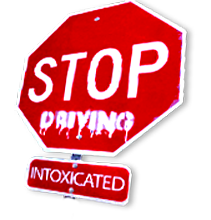I’m happy to see the good work of Schenectady’s own Doris Aiken featured in the recent book “One for the Road: Drunk Driving Since 1900,” by a medical historian at Columbia University, Barron H. Lerner.
Doris Aiken, in case you have forgotten, founded RID — Remove Intoxicated Drivers — back in 1978 and did as much as anyone in the country to raise awareness of drunk driving and more importantly to do something about it.
She lobbied, she agitated, she campaigned, and within RID’s first few years she had prevailed on the state Legislature to pass 13 bills aimed at deterring drunk driving, including a ban on plea bargaining, and as a result, alcohol-related traffic deaths dropped 23 percent, meaning 6,250 people lived who otherwise would have died.
It was the beginning of a national movement against drunk driving, and a heady time it was, if you remember. It meant really a change in national consciousness.
If you watch movies from the 1950s and 1940s, as I sometimes do, you’ll see that everyone in them drinks all the time and it’s considered perfectly normal. A sultry client enters the office of a private-eye at 10 in the morning, and the first question is, “Have a drink?” and the drink is already being poured before the question is answered.
Drinking up to and including drunkeness used to be cool, and having a hangover was evidence of sophisticated living, which you may not know if you came of age since 1980. That’s when RID got roaring and when other similar organizations like MADD (Mothers Against Drunk Driving) and SADD (Students Against Drunk Driving) also got going, and when drinking, or at least drunkenness, became somewhat less than cool. That’s when it became criminally irresponsible if you coupled it with driving a motor vehicle.
“One for the Road” chronicles all of this, including the disagreements and rifts within the anti-DWI movement.
The alcohol industry and the advertising industry that lived off it did their best to buy off the movement, and for a time succeeded with both MADD and SADD, giving large sums of money to both and seeing to it that they kept their focus on the aberrant behavior of the drunk driver rather than on the marketing of alcohol itself.
Anheuser-Busch was pretty soon paying the salary of MADD’s executive director and eventually contributed an estimated $850,000 over a five-year period to SADD. The industry’s newly sensitive slogan became “drink responsibly,” and it didn’t take a marketing genius to see that the first half of that message was “drink.”
Doris Aiken, bless her heart, accepted no alcohol-industry money, and as result says she became persona non grata in the national broadcast world, beholden to the advertising industry, in turn beholden to the alcohol industry. National television appearances were canceled, and interviews fell off.
MADD became the big national anti-DWI name, and RID receded as far as public profile went.
Indeed this new book quotes the then-head of the National Association of Broadcasters as saying, “As long as they’re on Capitol Hill trying to get rid of beer and wine ads, we’re not going to be very friendly.”
So this became a battle not so much between drunk drivers and non-drunk drivers — indeed, who was going to defend drunk drivers? — as a battle between those who put the focus solely on drunk drivers (MADD) and those who broadened the focus to include the alcohol and advertising industries (RID).
It was quite a turn of events when the two most prominent figures in MADD, happily accepting alcohol industry contributions, both finally went to work flat-out for the alcohol industry — Cindi Lamb for the National Beer Wholesalers’ Association, and Candy Lightner for a public relations firm that represented the American Beverage Institute.
Doris Aiken tells me the book is “very accurate but doesn’t go far enough,” either in detailing RID’s accomplishments or in explaining the backballing of the organization.
Maybe not, but it’s still an engaging story, and of course there is much more to it than I have summarized.
It is a chronicle of a grass-roots movement that started in Schenectady and really did change cultural attitudes, and also of corporate efforts to dilute it for the sake of continuing profits. It’s a story that has not yet completely played out and may never completely play out.

 RID chapters also played an active role in the early reforms in the laws introduced in Connecticut, Georgia, Idaho, Kentucky, Missouri, New Hampshire, New Jersey, Pennsylvania, Tennessee, and Utah.
RID chapters also played an active role in the early reforms in the laws introduced in Connecticut, Georgia, Idaho, Kentucky, Missouri, New Hampshire, New Jersey, Pennsylvania, Tennessee, and Utah.